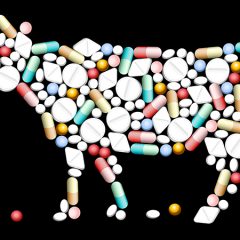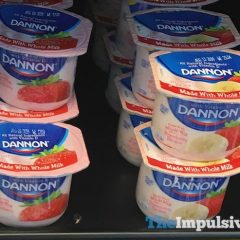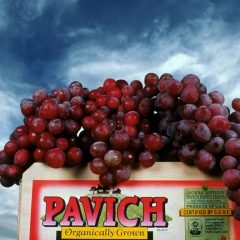Search results for “organic”:
Despite the mountains of evidence showing that we are loosing the race to preserve the efficacy of medically important antibiotics, sales of these vital drugs to livestock farmers have risen 26% since 2009, according to the latest FDA report on the subject, “Antimicrobials Sold or Distributed for Use in Food Producing Animals”. I first studied […]
Read More, References, Comment »
Keywords Site Map Keywords Navigate the extensive content throughout Hygeia Analytics with the following keywords. Click on the link below to access Hygeia content and pdf resources related to each keyword. 2,4-D, About Hygeia, Animals, Antibiotics, Antioxidants, Aquaculture, Bees, Bt, Cancer Risks, Children, Climate Change, Dairy, Dicamba, Dietary Risks, Economics, Environmental Impacts, Farmworkers, Fat, Food Security, GE Impacts on […]
A tipping point for the ages occurred in 2016 with the election of Donald Trump. Such dramatic changes almost always reflect deep and strong undercurrents that have built up over time. Several are unfolding now in the food and agricultural arena. I spent the first week of 2017 in the U.K., meeting with colleagues at […]
Read More, References, Comment »
In an edgy January 5, 2017 piece, Sean Pratt and the Western Producer Magazine have upped the rhetorical ante circulating over the October 17, 2016 letter from five major farm groups and the U.S. Farmers and Ranchers Alliance (USFRA) to Dannon-USA CEO, Mariano Lozano. The letter criticizes Dannon-USA for its pledge to source non-GMO ingredients and […]
Read More, References, Comment »
Charles Benbrook, Center for Sustaining Agriculture and Natural Resources, Washington State University Blog Post, September 2012 A comprehensive paper on the nutritional quality and safety of conventional versus organic food was published in the September 4, 2012 issue of the Annals of Internal Medicine (Smith-Spangler et al., Vol. 157, Number 5: pages 349–369). The Stanford University Medical […]
Read More, References, Comment »
“Vitamin” — the name that is given to 13 organic substances that are essential in the diet because they cannot be manufactured by the body. Vitamins are needed in very small amounts, but they are essential to life.
Read More, References, Comment »
“Phosphorylation” — the creation of a phosphate derivative of an organic molecule. This is usually achieved by transferring a phosphate group (-PO4) from ATP to another molecule.
Read More, References, Comment »
“Minerals” — nutritionally significant elements composed of only one kind of atom. Minerals are inorganic, i.e., they do not contain carbon as do vitamins and other organic compounds.
Read More, References, Comment »
“Minerals” — nutritionally significant elements composed of only one kind of atom. Minerals are inorganic, i.e., they do not contain carbon as do vitamins and other organic compounds.
Read More, References, Comment »
“Fatty acid” — an organic acid molecule consisting of a chain of carbon molecules and a carboxylic acid (COOH) group. Fatty acids are found in fats, oils, and as components of a number of essential lipids, such as phospholipids and triglycerides. Fatty acids can be burned by the body for energy.
Read More, References, Comment »





